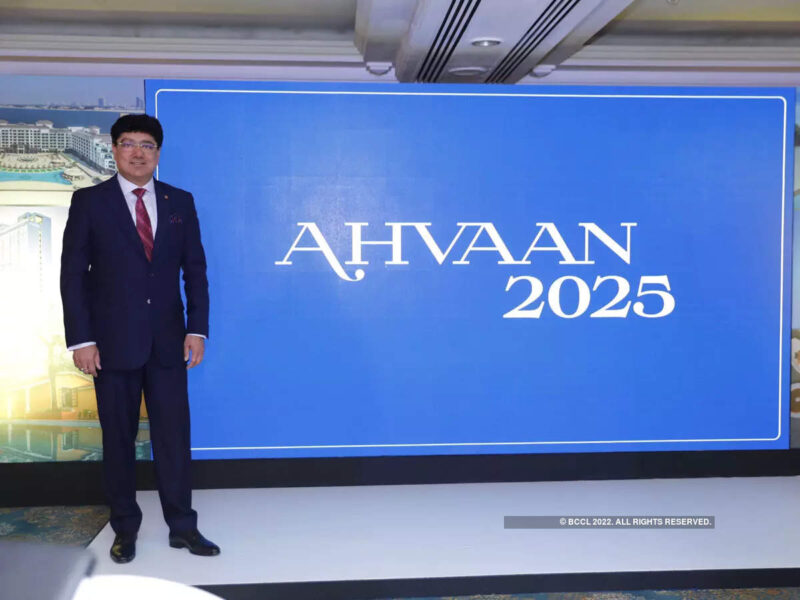Tata Group backed Indian Hotels Company (IHCL) announced on Monday that it was launching a new strategy called Ahvaan 2025. IHCL said under the plan, the hospitality chain will re-engineer its margins, re-imagine its ‘brandscape’ and restructure its portfolio. IHCL aims to build a portfolio of 300 hotels, clock 33% EBITDA margin with 35% EBITDA share contribution from new businesses and management fee by financial year 2025-26.
MD and CEO Puneet Chhatwal said IHCL signed over 100 hotels and opened over 40 hotels in the past five years, making it the ‘fastest growing’ hospitality company in India.
Ahvaan 2025 will further accelerate IHCL’s profitable growth by scaling its diversified brand portfolio across its traditional and new businesses. Its iconic and strongest brand Taj, Paathya an industry leading ESG+ framework and a strong focus on digital will be the key enablers on this journey,” he added.
The company said Ahvaan 2025 maps IHCL’s three-pronged strategy to grow profitably in the coming years. Its brand Ginger will be an important growth vehicle as per the strategy and will scale to 125 hotels, ‘amã Stays & Trails’, a branded offering in the homestay market will be a portfolio of 500 and Qmin, IHCL’s culinary and home delivery platform will expand to 25 plus cities
In an interview to ET last month, Chhatwal had said the hospitality chain will be a zero debt company by April 2023. The chain’s annual losses narrowed down to Rs 265 crore in financial year 2021-22 from Rs 796 crore in fiscal 2020-21 as per results declared in April.
IHCL also aims at re-structuring its portfolio and achieving a 50:50 mix between its owned, leased and managed hotels. It said it will look to ‘stimulate’ growth by unlocking capital through strategic partnerships, monetization and simplification. IHCL has a pipeline of 60 hotels and is present in 100 destinations across India. Its luxury brand Taj is slated to grow to 100 hotels across the globe, while Vivanta and SeleQtions will scale to a portfolio of 75 hotels. IHCL had unveiled a five-year business strategy called ‘Aspiration 2022’ in February 2018 which included simplifying the holding structure for greater profitability. The company’s vision changed to RESET 2020 following the Covid-19 pandemic.
We had to shift gears and forget any kind of aspiration that we might have had. It meant to survive and provide relief in terms of taking care of guests, associates and also doing what any Tata group would do-serve the community,” said Chhatwal.
And very quickly as of April 2020, we went into a reset. I think maybe we were the first ones even within the group to call it a reset strategy. And now, we realize it is time again very quickly maybe ahead of the others to say that we need to think about the next three to five years. Give some form of guidance. We went for a more generic word called Ahvaan which means call to action. It’s not a five year thing as more short term strategies actually worked well,” he added.
Saket Mehrotra, senior associate at Tusk Investments said IHCL has been clearly showing progress on their path to profitability given strong occupancy trends and their focus on increasing their revenue share from management contracts. “Tata Neu, while still at a nascent stage, can be a big potential game changer for the entire chain,” he added.
Chhatwal said the company went from a 17% EBITDA margin to 25 which was a 800 basis points increase, but then Covid hit. “So that was the guidance we had given till 2022 but we achieved it in March of 2020. Despite March being a complete shock, we were caught on the wrong foot all of us and our industry even more,” he said.
So instead of having Rs 100 crore plus profit, we were incurring a Rs 50 crore loss just in that one month. And still we achieved a 25% margin. We feel that we can double that guidance by going for another 800 basis point increase to 33%. So that is the official guidance and we believe it’s possible because we hit more than 30 in quarter three,” he added.
He said the chain is ‘very excited’ about the new high margin businesses. “Together with Ginger they should contribute at least 35% margin. They should provide for or become 30% of our revenue.”


















